On Monday I continued to work with SolidWorks in order to print an engineering drawing of the completed box. The drawing helps to simplify the dimensions and viewability as well as giving a paper copy to see. We also had a meeting for designing a system that will take a telescope up on a kite in Australia to view a solar eclipse. I took on the role as project manager and for the rest of the day another high schooler and I worked with SolidWorks to design and print parts to help connect the kite. We designed three parts, one to connect ballast, one to connect two rods as an X, and two parts to help connect the rods to the kite. It was a lot of fun to have a meeting with peers about how to design a system under a set of constraints. We ran a ton of ideas by each other and it worked on my creative engineering ability.
(3D printed parts)
Tuesday we had to redo some 3D prints as we needed to change the diameter of one of the rods due to material shortage. We also had to print a cap for the PVC ballast in which metal pellets are poured in to add weight. The more fun part of the day however was spent building small rockets. The rockets are designed to fly to almost 2,000 feet and were put together rather simply. My favorite part of the rockets was the presentation by propulsion specialists beforehand. They presented a great history of rockets as well as a few equations and principles that get the rockets in the air and in space.
(Rockets)
Wednesday we completed the build of our Australian kite telescope system as is shown below. A few problems arose during the assembly, and it was a lot of fun to be creative and come up with solutions. During the middle of the day we joined the other high schoolers in building indoor kites, however I was much more excited about our kite design and so I dropped out of the competition and continued preparing our kite. By the end of the day we were able to connect our system to a kite and actually get it into the air. It worked very well and we fixed any small kinks we could find. We showed the professor and got ideas for future tests.
On Thursday it was only Micah and I left to test as everyone else had left. Once we arrived at the lab we grabbed our gear and went to a field to fly. The main question we have is whether the ballast should be under the bar (picture 1) or past the bar (picture 2). The advantage of moving the ballast higher and over the bar is that it doesn’t need to conflict with the bar. It also settles in half of the time after being swung. The disadvantages however, include it requires more weight in order to keep the telescope at the top due to it having less leverage. This means the kite needs to pull more weight up, which it might not be able to do. That brings us to our next question. What is the relationship between wind speed and pounds the kite can pull. For the remainder of the morning we tested as much of this as we could all between 5-8 mph of wind.
On Friday we prepared a new box for the solar cell. This one was about twice as thick and a larger area inside to house the electronics. Most of the day was spent measuring and cutting the styrofoam and it went a lot smoother the second time we built. We also attached the sensors to the lid and attached the solar panels.

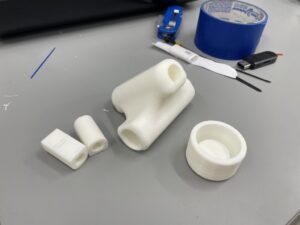
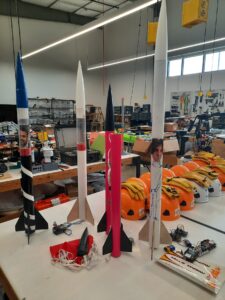
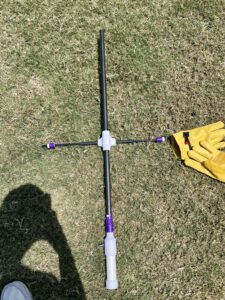
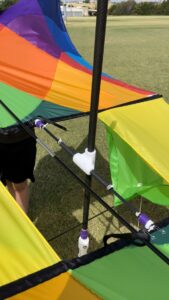
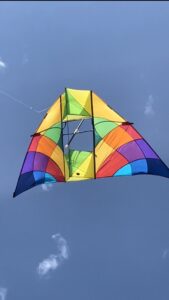
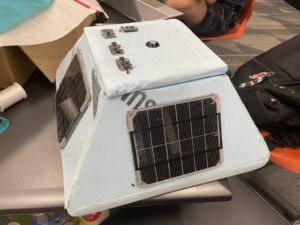
There are no comments published yet.